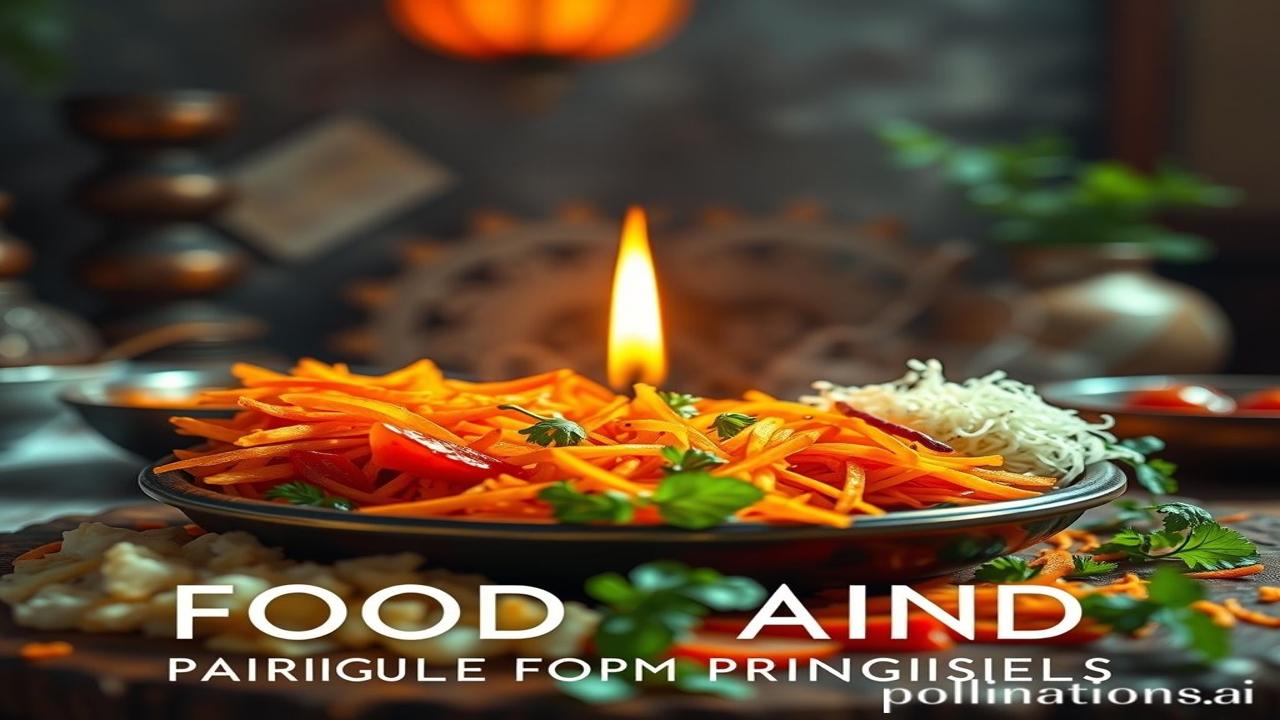Kabhi Socha Hai, Annapurna Maa Ki Rasoi Mein Kya Raaz Chhupe Hain? (Have you ever wondered what secrets are hidden in Goddess Annapurna’s kitchen?)
Imagine, just for a moment, the aromas swirling from an ancient kitchen. Not just any kitchen, but one blessed by Annapurna, the goddess of nourishment. The scent of ghee simmering, spices crackling, and the subtle, earthy notes of freshly harvested grains. For thousands of years, these kitchens weren’t just places of cooking; they were laboratories of life, where food was crafted not just for taste, but for health and harmony. This isn’t some fantasy; it’s the very essence of Ayurveda’s food pairing principles. Aaj hum jaanenenge, how this ancient science can make a huge difference in our lives!
Ayurveda Aur Bhojan: A Timeless Connection (Ayurveda and Food: A Timeless Connection)
Ayurveda, literally meaning “the science of life,” is an ancient Indian system of medicine that dates back over 5,000 years. Its roots lie in the Vedic period, specifically the Atharvaveda. Ayurveda doesn’t just treat diseases; it’s a holistic approach to health that emphasizes prevention and longevity. And at the heart of Ayurveda lies ahar – food.
Think of it this way: in Ayurveda, your food isn’t just fuel. It’s medicine. It’s believed that the right food combinations, tailored to your prakriti (constitution), can promote balance and well-being. Conversely, incompatible food combinations can disrupt digestion, leading to the accumulation of ama (toxins) and eventually, disease. This is why traditional Ayurvedic texts like the Charaka Samhita and Sushruta Samhita dedicate entire chapters to the principles of viruddha ahara (incompatible foods).
Zamini Sach: Vaidya Ji Ki Salaah (The Ground Truth: Vaidya Ji’s Advice)
Picture a bustling village in ancient India. The local vaidya (Ayurvedic physician) is a respected figure, consulted on everything from illnesses to optimal diets. “Beta,” he might say to a young farmer, “dahi (yogurt) kabhi bhi raat ko mat khana (never eat yogurt at night). It increases kapha and can cause coughs and colds.” Or, to a weary artisan, “Shahad (honey) is good for your throat, but never heat it! It becomes toxic when heated.”
These weren’t just old wives’ tales. They were based on centuries of observation and experience. Ayurveda classified foods based on their rasa (taste), guna (qualities), virya (heating or cooling energy), and vipaka (post-digestive effect). The vaidya understood how these qualities interacted and advised people accordingly. Imagine Ma Rukmini, preparing a feast for the annual village festival. She knew that combining milk with salt was a no-no – it could lead to skin problems. Her wisdom wasn’t just about taste; it was about ensuring the health and happiness of her community.
Dharohar Aur Pehchan: Ayurveda Today (Heritage and Identity: Ayurveda Today)
Today, even in our fast-paced world of instant noodles and processed foods, the principles of Ayurvedic food pairing still resonate. We see echoes of it in our traditional recipes, in the way our grandmothers cooked, and in the simple wisdom passed down through generations. Think of the humble khichdi – a perfectly balanced combination of rice, lentils, ghee, and spices – considered a complete and easily digestible meal.
Ayurveda is increasingly becoming part of our national identity. From yoga and meditation to herbal remedies and mindful eating, we’re rediscovering the value of our ancient traditions. By understanding the principles of Ayurvedic food pairing, we can make informed choices about what we eat and how we combine our foods to promote better health and well-being. It is a Bharatiyata that we often overlook.
Mazedar Tathya Ya Bhram-Bhanjak (Fun Fact or Myth-Buster)
- Myth: All fruits are good for you at any time.
- Truth: Ayurveda suggests avoiding fruits with milk, especially citrus fruits. The vipaka of milk and acidic fruits clashes, disrupting digestion.
Drishya Aur Bhavnayein (Visual and Sensory Layer)
Imagine the air in the vaidya’s clinic, thick with the scent of herbs and incense. The warm, earthy aroma of turmeric and ginger, mingling with the sweet fragrance of sandalwood. Feel the cool touch of the copper vessels used to store water, believed to have healing properties. Hear the gentle chanting of mantras as the vaidya prepares herbal remedies, infusing them with shakti (energy).
Antim Vichar Ya Uddharan (Closing Insight or Quote)
“Ahar shuddhau sattva shuddhih sattva shuddhau dhruva smritih. Smriti labhe sarva granthinam vipramokshah.”
This Sanskrit shloka translates to: “With purity of food comes purity of mind; with purity of mind comes constant remembrance; with constant remembrance comes liberation from all bondage.” This is the core of Ayurveda’s philosophy on food – it’s not just about what we eat, but also about how it nourishes our mind, body, and spirit. So, next time you prepare a meal, remember the wisdom of our ancestors and let food be your medicine. Let Annapurna Maa bless your kitchen!
